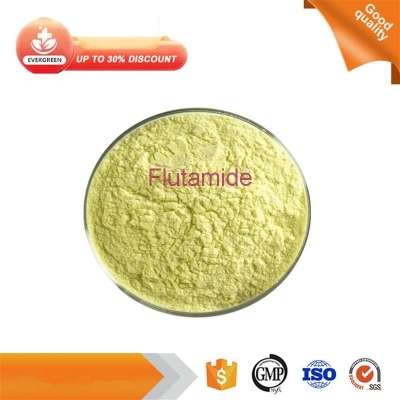-
Categories
-
Pharmaceutical Intermediates
-
Active Pharmaceutical Ingredients
-
Food Additives
- Industrial Coatings
- Agrochemicals
- Dyes and Pigments
- Surfactant
- Flavors and Fragrances
- Chemical Reagents
- Catalyst and Auxiliary
- Natural Products
- Inorganic Chemistry
-
Organic Chemistry
-
Biochemical Engineering
- Analytical Chemistry
- Cosmetic Ingredient
-
Pharmaceutical Intermediates
Promotion
ECHEMI Mall
Wholesale
Weekly Price
Exhibition
News
-
Trade Service
iNature
Acute myeloid leukemia (AML) is a fatal hematological malignancy that originates from the unlimited proliferation of immature progenitor cells, is characterized by intramedullary and extramedullary invasion, and has a 5-year overall survival rate of less than 30%
after chemotherapy.
Extramedullary infiltration (EMI) is a concomitant manifestation
of acute myeloid leukemia (AML) with a poor prognosis.
The underlying mechanisms remain poorly understood, and treatment options are limited
.
On November 2, 2022, Lu Ying of Xinhua Hospital affiliated to Shanghai Jiao Tong University School of Medicine, Yan Jinsong of the Second Affiliated Hospital of Dalian Medical University and Xia Li of Shanghai Jiao Tong University School of Basic Medicine jointly published an online publication entitled " C1Q labels a highly aggressive macrophage-like leukemia population indicating extramedullary infiltration and relapse "The study found that complement C1Q+ macrophage-like leukemia-like leukemia subsets were enriched in the skin, present in BM prior to EMI manifestations, and were further confirmed
in multiple AML patients by performing single-cell RNA sequencing on BM and EMI samples from an AML patient with generalized leukemia skin.
In conclusion, C1Q is a poor prognostic marker for AML, which coordinates the cancer invasion pathway through communication with fibroblasts and represents a compelling EMI therapeutic target
.
Bone marrow (BM) malignant leukemia cells infiltrate into tissues other than the bone marrow to form extramedullary masses, referred to as extramedullary infiltrates (EMI), which is a common accompanying symptom of AML, with an incidence of 2.
5% ~ 30.
5% at the initial diagnosis and 65%
diagnosed by positron emission tomography/computed tomography (PET/CT).
Acute myelomonocytic (M4) and monocytic leukemias (M5) are the two subtypes of AML and are the most common incidence
of EMI.
Common EMI tissues include the skin, peritoneum, lymph nodes, gastrointestinal tract, genitourinary system, and central nervous system
.
The prognostic significance of EMI involvement is not fully established
.
Some studies have shown it to be an indication of poor prognosis, chemotherapy resistance, or relapse, including in patients
undergoing hematopoietic stem cell transplantation (HSCT).
However, other studies, including the ECOG-ACRIN Cancer Research Group trial, have found that EMI has no effect
on the prognosis of AML.
The underlying causes of EMI remain elusive and present clinical challenges
for optimal treatment of EMI patients.
In this study, the researchers studied a patient with highly aggressive monocytic leukemia who experienced multidrug resistance and widespread leukemic skin, a phenomenon defined as skin involvement
of AML.
Given the failure of traditional therapies and the lack of alternative treatment options, researchers expect that single-cell RNA sequencing (scRNA-seq) may provide personalized drug approaches to identify change pathways
that may be targeted through clinically available strategies.
Unfortunately, the patient died quickly before any targeted therapies could be developed, but the researchers identified the most typical macrophage-like C1Q+ population associated with EMI and poor outcomes, and confirmed its unique function
in migration.
Further through genomic and transcriptional analysis, the researchers revealed mutation and gene expression characteristics in EMI patients expressing high levels of C1Q; RNA sequencing and quantitative proteomic analysis were used to show the expression dynamics of C1Q from initial onset to relapse.
Univariate and multivariate analyses showed poor prognostic significance
of C1Q expression.
Mechanistically, the C1Q expression regulated by the transcription factor MAFB gives leukemia cells the ability to infiltrate tissue, enabling the establishment of obvious skin or gastrointestinal EMI nodules
in patient-derived xenograft (PDX) and cell line-derived xenograft (CDX) models.
In addition, fibroblasts attract migration
of C1Q+ leukemia cells through recognition of C1Q-gC1QR and subsequent stimulation of TGF-β1.
This cell-to-cell communication also helps C1Q+ leukemia cells survive
chemotherapy stress.
Model of the mechanism by which C1Q-gC1QR signaling promotes leukemia cell migration (Figure from Blood) In summary, the study shows that C1Q is a poor prognostic marker for AML, elucidates the role of tissue fibroblasts, and develops antibodies that can stop leukemia migration, a result that may help treat AML patients
with EMI in the future.
Original link: https://doi.
org/10.
1182/blood.
2022017046
—END—
The content is 【iNature】







